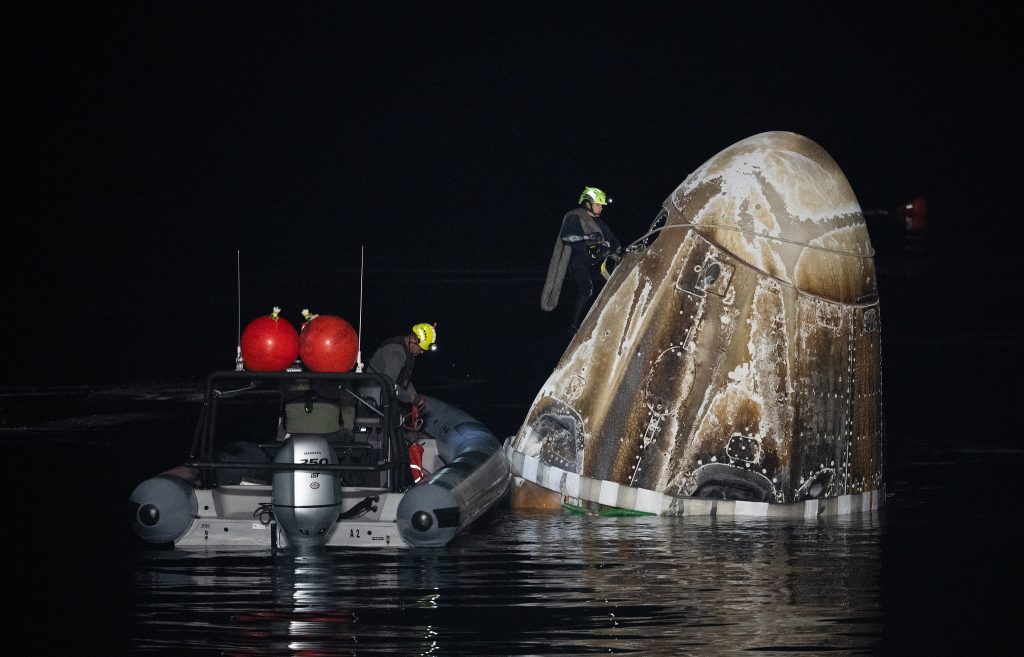A Crew Dragon spacecraft landed in the Gulf of Mexico near Pensacola, Florida, at 5:47 a.m. Eastern on March 12, bringing back a crew from the International Space Station after more than six months.
The Crew Dragon spacecraft Endurance returned to Earth in the Gulf of Mexico near Pensacola, Florida, at 5:47 a.m. Eastern after a normal reentry. The spacecraft had left the station more than 18 hours earlier.
Endurance’s return marked the end of the 199-day Crew-7 mission, which began last August. On board were NASA astronaut Jasmin Moghbeli, European Space Agency astronaut Andreas Mogensen, Japan Aerospace Exploration Agency astronaut Satoshi Furukawa and Roscosmos cosmonaut Konstantin Borisov. All four were out of the capsule less than an hour after splashdown.
The post-splashdown recovery was one of the quickest out of the 12 Crew Dragon splashdowns to date. “The SpaceX team did a great job of getting the Dragon capsule out of the water and back onto the ship. They continue to improve,” said Steve Stich, NASA commercial crew program manager, in a call with reporters. He said favorable weather conditions, with light winds and calm seas, likely also contributed to the speedy recovery.
The splashdown marked the third flight of Endurance, all of which were long-duration ISS missions. Benji Reed, senior director for human spaceflight programs at SpaceX, noted at the briefing that the capsule has spent 534 days in space, more than any crew-rated vehicle in history.
Crew-7 left the ISS nearly a week after the arrival of their replacements. Crew-8, on another Crew Dragon spacecraft called Endeavour. NASA astronauts Matthew Dominick, Michael Barratt and Jeanette Epps, and Roscosmos cosmonaut Alexander Grebenkin will remain on the ISS for the next six months.
Endeavour, Reed added in the call, will surpass Endurance’s current record, with 476 days and counting in space. “The Dragons are a workhorse in the industry.”
The return of Crew-7 opens up a docking port on the station for a cargo Dragon mission, CRS-30, scheduled for launch later this month. That vehicle will remain docked to the station for a month before it returns to Earth. It will be followed by the first crewed flight by Boeing’s CST-100 Starliner, now scheduled for early May.









